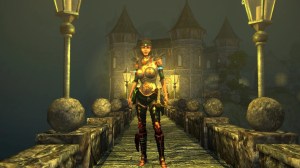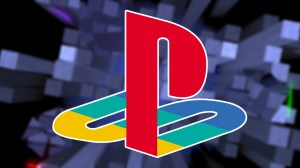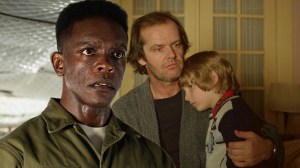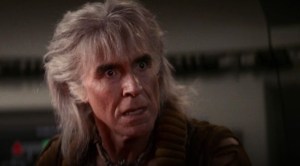
What do you think of first when someone mentions One-Punch Man? A deadpan sense of humor that transforms even the most horrific displays of violence into laugh riots? Character designs that have fleshed out a world filled with superheroes every bit as fascinating as those from Marvel and DC? Action and spreads packed with so much detail and energy that most manga readers are left drooling? All of these factors have made the current series from writer ONE and artist Yusuke Murata an international hit. However, there’s one element that’s more and more prominent within the series and deserves additional attention as it develops: social satire.
Videos by ComicBook.com
While One-Punch Man (in all its forms) has presented satirical elements from its start, many geared to the tropes of shonen and superhero comics, these have become more critical of social structures as the series continued. The organization of superheroes, nature of the eponymous hero Saitama’s powers, and elements of class warfare have all formed into a critique of meritocracy, the concept that society should be organized in a fashion where power is given to individuals based purely upon their abilities. It’s an ideal often embraced across both Japanese and American media (not just comics) and politics, and one that ONE has taken serious jabs at throughout the series, especially in its most recent volumes.

Ranking Heroes
Before delving into how Saitama specifically critiques the idea of meritocracy, it’s worth looking at the off-brand society in which he functions. The world of One-Punch Man bears many similarities to our own, but its geography and government are unique (not to mention it possesses superheroes and monsters). The various locales of the world are listed by letter, with Saitama originating from City-Z. The generalities allow it to be easily mapped onto modern Japan, the United States, and most other developed nations. There’s a stable central government, a capitalist economy, and a generally high-standard of living (minus monster attacks). It’s in this culture that the Hero Association was developed, and it reflects the priorities and values of that culture.
The Hero Association is charged with training, employing, and deploying the many professional superheroes of this world. It utilizes a four-tier system to divide these heroes into classes (C, B, A, and S, ordered from least to most powerful). Each class is then ranked within itself, further ordering every hero into a clear ranking from “worst” to “best.” Class and ranking are highly competitive as they not only determine status, but the pay, benefits, and respect afforded to each hero. It’s also important to note that these designations and any changes to ranking are determined by the Hero Association, which essentially tracks active superheroes.
Fewer than 20 people are listed in S-Class heroes, and they receive a disproportionate share of income, all of them appearing to live in luxury (or, at the very least, conditions they appreciate). They possess immense freedom with some heroes, like Metal Knight, willfully ignoring monster attacks. The ranking of these heroes has been shown to be immensely flawed, both due to a lack of contribution and a lack of actual merit. The S-Class hero King has been revealed to be an ordinary man, albeit one with a great knack for fighting games, who is terrified of actually battling monsters. Many A-Class and B-Class heroes have teamed up to show they are similarly competent (and every bit as brave and sacrificing) as S-Class heroes, as shown in a battle with villain Garou in volume 16. Yet all of the S-Class heroes receive far more than the A-Class heroes, and most of the C-Class heroes are forced to work other jobs, while all of them risk their lives on a daily basis.
The organization of this recognizable world shows that the tests and systems used to determine merit are deeply flawed. There is a superficial claim that everyone is neatly organized according to ability, but this claim is transformed into a punchline in nearly every volume. Nowhere is this joke more evident than in Saitama’s career. The series’ One-Punch Man has been shown to be the most powerful hero on the planet, capable of defeating monsters with a single punch, but was initially assigned to C-Class by the Hero Association.

“Ultimate Training”
The start of Saitama’s career is a parody of the typical superhero story. He comes across a monster after being rejected in a job interview and attempts to save a child. After this encounter he decides to become a hero “for the fun of it” and proceeds to train every day with the same regiment: 100 sit-ups, 100 push-ups, 100 squats, and a 10-kilometer run. Over the course of three years, this transforms him into the most powerful hero on the planet (and also results in hair loss). While this routine is impressive, it doesn’t account for the near omnipotent level of power that Saitama displays. When other heroes are told Saitama’s origin story, they typically respond with disbelief. He enters many battles with monsters who have destroyed entire cities or killed hundreds primarily to find a new challenge for his own abilities and end his boredom.
Saitama’s disproportionate power levels and recurring disconnect with the stakes of monster attacks evokes another critique of the seemingly meritocratic Hero Association. It’s not simply that the system fails to acknowledge who its most powerful member is or utilize that person effectively, it’s that the same person appears to not be well-suited to the role of a heroic leader or defender. Even if the system functioned as intended, Saitama would not necessarily be well-suited to the S-Class, Rank 1 role to which he is seemingly entitled. His student Genos, a very powerful android driven to help as many people as possible, is typically ignored by Saitama, who is more interested in playing games and clipping coupons than developing new talents. His raw talent makes him incredibly useful in certain situations, but he is severely lacking in many other qualities. This is true of other S-Class heroes, including the deeply selfish Metal Knight and known sexual harasser Puri-Puri Prisoner. In spite of their power, there are good reasons why they should be demoted or not considered heroes at all. The emphasis on raw power above all else as a measurement of worth is both ineffective and rewards bad and apathetic actors alike.
Saitama’s inordinate strength also highlights the ways in which focusing on only a few key metrics of skill makes it impossible for other talented individuals to receive recognition. The training routine that led to Saitama’s power is unique to him, something that can be replicated without anything close to the same final results. Saitama shows how a seemingly meritocratic system often rewards skills that come naturally to some, like many of the most-skilled S-Class heroes, without ever recognizing effort or less easily measured traits (e.g. leadership, compassion). Even if the Hero Association were competent enough to somehow organize all of their members by raw power, those at the top like Saitama and Steel Knight would still be far from the best heroes in the series. It’s likely no accident that Saitama and many other top-ranked heroes (including the powerless King) are portrayed as young men coded as being either white or racially ambiguous.

Mumen Rider vs. Garou
One-Punch Man offers two responses to the inadequate, meritocratic system provided by the Hero Association in the forms of its noblest hero and deadliest villain. The former is Mumen Rider, a hero perpetually stuck at C-Class, Rank 1 due to his ordinary human strength and only possessing a bicycle as special gear. Despite how the Hero Association defines Mumen Rider, he regularly battles monsters far more powerful than him and risks his life to save those of all others (including the villain referenced before). In what is perhaps One-Punch Man‘s most iconic moment to date, Mumen Rider battles the incredibly powerful monster Deep Sea King alone in order to distract him from attacking civilians. Mumen Rider both acknowledges his own limits in this fight and devises a strategy that will maximize outcomes stating, “It’s not about winning or losing. I just have to stand here and face you.” Saitama eventually comes upon their battle, killing Deep Sea King and saving Mumen Rider. It’s because of Mumen Rider, not Saitama, that hundreds of potential victims survive the day, though.
Mumen Rider chooses to work within a flawed system. He acknowledges that he will never receive as much power or respect, and will suffer a lot more harm, by serving people through the Hero Association, but he also desires to serve people above all else. His ability to inspire, incredible work ethic, and focus on saving lives makes him well-suited to leadership, but he is left to languish on the skirts of the organization. However, he is still able to save some lives and participate in good fights no matter how flawed that system may be.
Garou, also known as the “Hero Hunter,” offers a very different response to recognizing the flaws of meritocracy. He is the former student of Bang, an S-Class hero, who was on track to become a powerful hero himself before being dismissed by his master due to his violent tendencies. Garou recognizes that strength is the only attribute rewarded by the Hero Association and gravitated towards proving himself as the strongest individual there is, first as part of that system and now as an outsider desiring the status of monster. He is the ultimate outcome of a meritocratic society where individuals are ranked against one another. When the it is a zero-sum game and only allows one person to be considered the best, then there are no limits on what one should do to win that game. This has left Garou as a man without limits, the most monstrous individual in a world stuffed with monsters, someone willing to kill everyone considered his superior to dominate the world.
But Garou is not destroying the system as much as he is remaking it in his own image. With all of the heroes dead, he would be left to dominate a new hierarchy of monsters who would all be ranked beneath himself. The flaw that he perceives is that his own strength, like that of Saitama, is not sufficiently recognized.
This pairing represents the overall critique of modern meritocratic ideals in One-Punch Man. Both men are forced to confront a world that claims to be meritocratic, and how that belief ultimately results in a failure to recognize the value of many individuals’ lives and abilities or support the greater good. Kind, skilled individuals like Mumen Rider are left to languish, helping where they can, while unethical, power-hungry individuals like Garou commit atrocities by embracing the ideology of a meritocracy. Mumen Rider sees all life as having value; Garou only sees value in his own dominance.
Both of these responses appear inadequate as neither challenges the flaws of the Hero Association, opting to perpetuate or recreate them instead. This may explain why One-Punch Man opts to present all of this as a farce. With so little hope for reform, in this fictional society or those it intends to mirror, there can be only laughter or despair; ONE seems to prefer laughter.
However, there is some hope to be found in Mumen Rider’s approach. His battle with Deep Sea King did not end with him simply lying beaten while Saitama finished the fight, it ended with the two enjoying each other’s company. Mumen Rider has remained a recurring figure in One-Punch Man and a beloved figure within the hero community. It is possible to imagine that his virtue might persuade far more powerful figures in the Hero Association, heroes like Saitama and Genos, to rebuild that system into one that fairly rewards all of its heroes and cares for more than raw strength. While that might seem unlikely, it’s the same sort of battle that Mumen Rider has waged before, one where the goal is to keep going because, no matter how much you might hurt, it could make the world a better and more just place to live.








